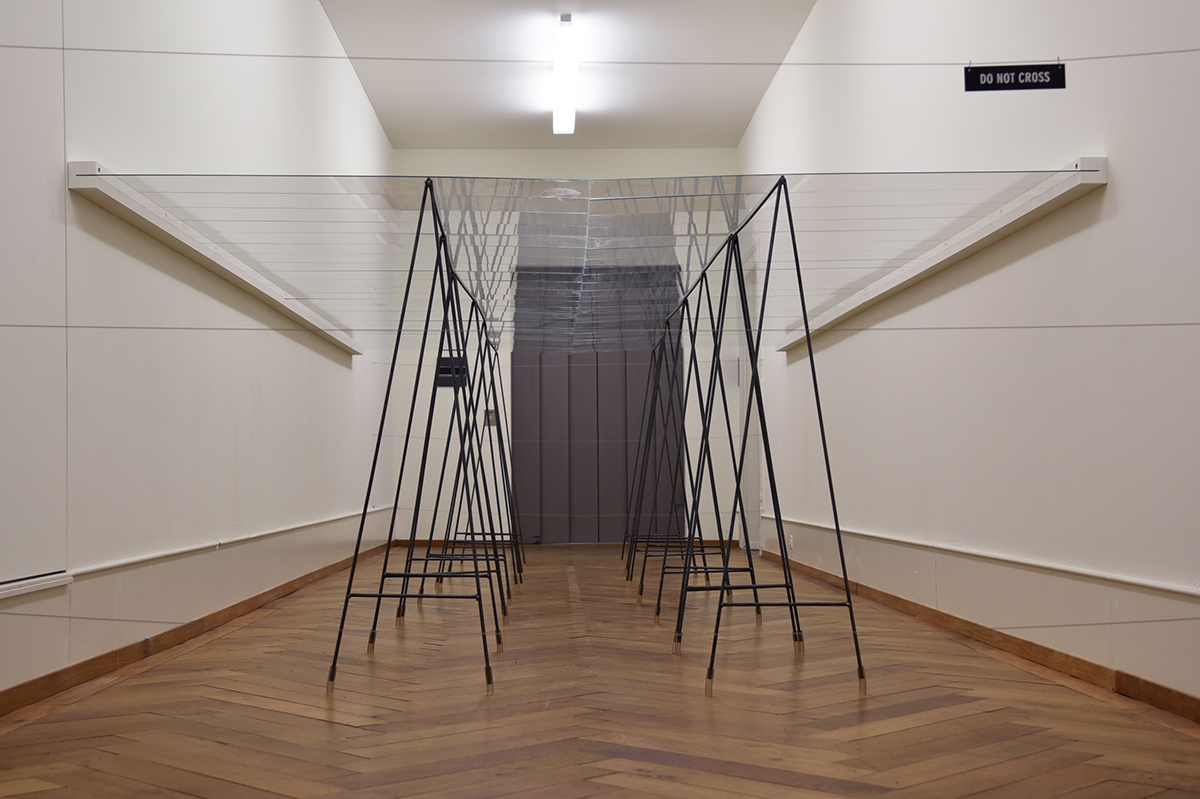ENG
DO NOT CROSS
Performance
The work Do Not Cross is conceived as a part of the Master thesis and it was performed for the first time at the final exhibition at the Centre Pasqu Art in Biel. The work consists of three segments: installation-performance-installation. My idea was to cut off the space at the height of my neck with a glass surface which was suspended between me and the audience. The performance did not start with my positioning in the space, but rather the positioning of the glass which blocked one part of the space straight away. By moving towards the audience I cut my way through the glass. In other words, the resistance of the glass, in this case, determined whether I would be able to go through it to the end. This was a very delicate process which demanded great concentration and calm on the part of the performer. Once I stepped inside the glass there would be no turning back – I would have to go forward to the end or as far as I was able to. The feeling of constraint, which was caused in this case, enlightened me about the maximum pressure I could take. After doing the performance I intended to leave the construction, with the marked route of my movement, standing in the space for a couple of days as a memorandum of that event, namely, the second installation.


